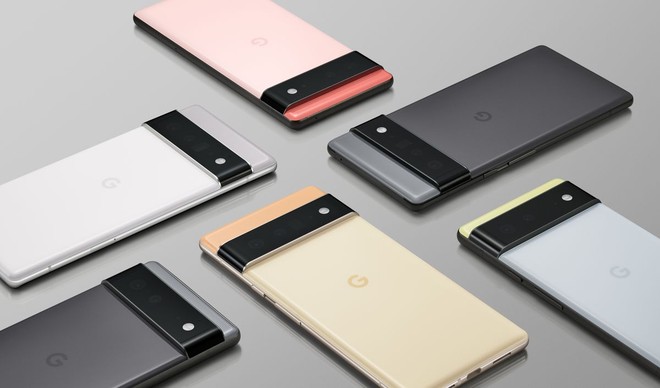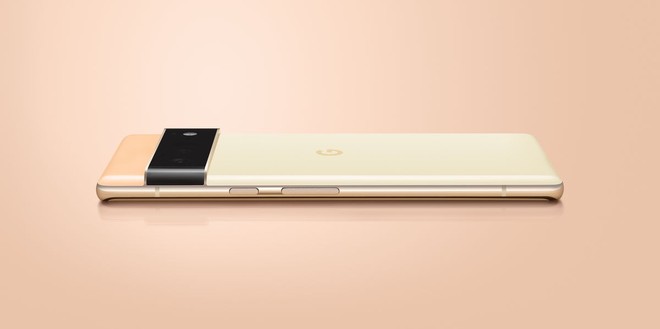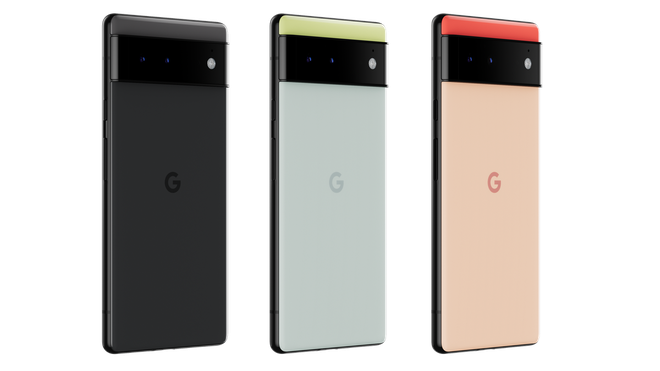While not a fully private SoC, Tensor could be the first step on the road to becoming the iPhone of the Android world.
- Tram Ho
The newly-launched Pixel 6 series is Google’s most attempted phone in recent years, with the biggest change being a dedicated SoC called Tensor. For the first time, Google has shown its ability to leverage years of machine learning experience to make a Pixel phone more popular, and not just an interesting line of devices among tech lovers.
Tensor is an important game of Google, with the center is TPU (Tensor Processing Unit) with the ability to improve images, videos, search, automatic subtitles, … and related features. Such AI. This is a very high request, and we have to wait until the actual product is available to evaluate the real performance of this SoC. But even if Tensor hasn’t been able to bring the Pixel line up to the level of the “iPhone of the Android world,” this could be an important first step towards being a top Android flagship.

Apart from the TPU part, what we know about this SoC is still quite obscure – but it is possible that Google will use parts such as CPU, GPU or modem with designs from 3rd parties. This means that The Pixel 6 will feel like other Android phones running Qualcomm or Exynos chips in most tasks, instead of being a revolutionary upgrade to be able to compete with A series chips. from Apple.
Google has not given much information about the actual architecture of Tensor – components such as CPU, GPU mentioned above. But based on the rumors all the time, and also the fact that Google will definitely advertise tweaks and improvements especially if they do, then there is a high chance that much of what’s inside Tensor will be. outsourced by another firm. Qualcomm and Samsung have also used similar tactics – the Snapdragon 888 model uses custom versions of Arm designs such as the Cortex-X1, A78 and A55, while the Exynos 2100 uses Arm designs for both the CPU and the A55. GPUs.
According to information from XDA, it seems that Tensor will use a combination of Cortex-A78, Cortex-A76 and Cortex-A55 core designs as well as Arm’s standard GPU design – Mali. This means that the difference in CPU or GPU performance between Tensor and a “popular” SoC like the Snapdragon 888 or Exynos 2100 will not be large. But this can be considered a move in the right, especially when Google wants to produce a true flagship.

As Rick Osterloh from Google told The Verge, “the standard components that people notice will be very competitive, but the AI components will be completely different” . It’s clear with the history of the Pixel series, even with big changes like Tensor, that what makes them special isn’t how smooth the game is or how powerful the CPU is or how good the battery is.
This points to a somewhat harsh truth for Android or Pixel fans: Tensor is probably not the magic solution they were hoping for. It’s not a chip made and designed entirely by Google, optimized for Android software and Pixel hardware to deliver power and performance the way Apple has for years.
But the good news is that the Tensor inside the Pixel 6 is just a first-generation product. It’s easy to wonder why Google didn’t learn from Apple and make its own chip, but the fact is that Apple has also started with a similar strategy on previous A-series SoCs. The A4 and A5 chips actually just use standard Arm designs with CPU cores (with a bit of improvement and optimization, of course), leaving the later generations to be their own custom designs.
In the production of Pixel 6, rumors suggest that it looks like Google is working with Samsung. The Korean giant will be responsible for manufacturing the chips – which makes sense since Samsung and TSMC are the only two companies that can produce chips on the 5nm process. In the rumors, it seems that Samsung and Google work very closely in both the design of the chip, not just the manufacturer. But obviously we still have to wait until Google publishes more information about Tensor to be able to assess the extent of this promising combination.
The idea of using a chip to handle machine learning tasks isn’t new to the Pixel phones. Google has also previously brought AI processing chips into its pet phone line since 2017 – with the Pixel Visual Core and later with the Pixel Neural Core (and then Google itself dropped it on the Pixel 5). So for fans of the Pixel phones, Tensor is more of a tweak of what’s already done than a whole new improvement.

The big difference is probably still inside the TPU, which as far as we know will handle more types of AI tasks than what Visual/Neural Core can do. It’s also more tightly integrated with the phone, as Google notes that the TPU can do things like directly process image data through it. These benefits will probably be worth the effort Google put into making such a custom SoC, although of course we will have to wait until the Pixel 6 goes on sale to compare it with other Android flagships.
At present, the difference between Tensor and Snapdragon 888 to us is probably just a few different “tricks” of artificial intelligence. But again, like Apple’s early chips, Tensor could very well be the first step on a long journey to produce Google’s own chips. And that is more desirable to users than improvements in machine learning, or artificial intelligence.
Source : Genk
